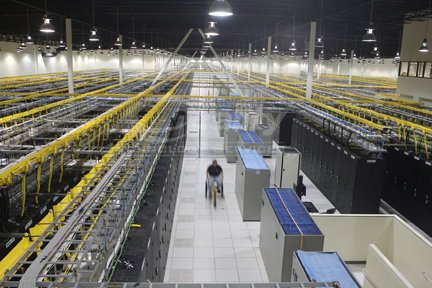🏗 A true infrastructure revolution is unfolding in the U.S. today — quiet, yet massive in scale. There are already 5,426 data centers operating across the country — more than in all other major economies combined. This figure not only reflects technological superiority — it symbolizes the transition to a new era where data has become as valuable as oil or gold in the last century.

According to the analytical publication The Kobeissi Letter, new data centers worth about $40 billion are currently under construction in the U.S. This represents an astonishing 400% increase compared to 2022. This is not a temporary surge but a long-term trend, reflecting a global shift toward digital infrastructure, cloud technologies, and artificial intelligence.
Experts note that for the first time in history, the value of data centers under construction in the U.S. will soon exceed the combined value of all new office buildings. Just three years ago, the ratio between these sectors was roughly 1 to 7 in favor of offices — now offices are losing relevance, while new data centers are becoming the economic engine of the future.

The reasons for this rapid growth are clear. The explosive rise of artificial intelligence and large language model training requires enormous computing power. Companies from Silicon Valley and major cloud players — Microsoft, Google, Amazon, Meta — are actively investing in the construction of data centers capable of processing terabytes of information in real time. The AI infrastructure sector, in particular, is growing rapidly, with demand for power-hungry servers and cooling systems far exceeding all expectations.
Another point of interest is the geographical distribution of these projects. Most new data centers are being built not on the coasts but in the central and southern states — from Texas to Iowa. These regions attract investors with affordable land, relatively cheap electricity, and innovation-friendly policies. Some areas are experiencing a construction boom: small towns are transforming into tech hubs, drawing in cybersecurity experts and server cooling engineers.

As noted in The Kobeissi Letter, “this is the modern gold rush” — except instead of picks and mines, the tools are now gigabytes, processors, and megawatts of power.
Analysts warn that such rapid growth could worsen energy consumption issues. Data centers in the U.S. already consume about 4% of all electricity generated, and that figure is expected to double by 2030. However, in response to these energy challenges, tech companies are investing in renewable sources, including solar and wind power plants, to make the industry more sustainable.
🔥 Overall, the U.S. is confidently establishing itself as the world leader in digital infrastructure, where every new data center is not just a building of concrete and steel but a foundation for the future economy, driven by algorithms, data, and artificial intelligence.
All content provided on this website (https://wildinwest.com/) -including attachments, links, or referenced materials — is for informative and entertainment purposes only and should not be considered as financial advice. Third-party materials remain the property of their respective owners.


